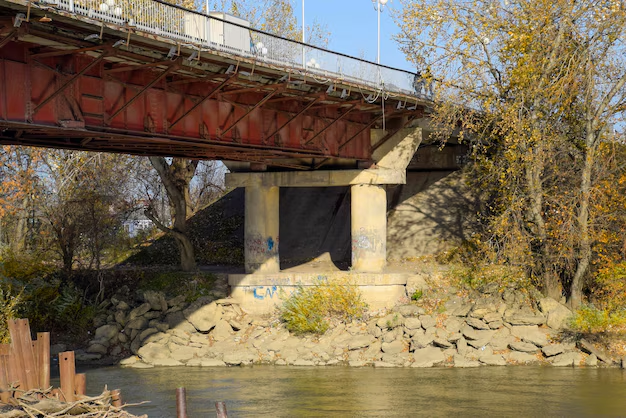Discover the Significance of the Bridge at Turtle Creek
Nestled in the heart of an ever-expanding suburban landscape, the Bridge at Turtle Creek stands as a symbol of connectivity—linking not just two sides of a waterway but also communities and opportunities. This unassuming structure on the surface belies its role as a lifeline for local infrastructure, much like financial assistance programs can bridge gaps for those in financial need.
A Modern Day Marvel and Its Impacts
The Bridge at Turtle Creek is more than just a practical necessity for daily commuters; it is a carefully engineered marvel, emblematic of urban planning successes. Similarly, the presence of effective financial and educational support systems can span the gap between challenging circumstances and economic stabilization. Understanding the routes these programs offer can empower individuals to navigate financial difficulties with greater ease.
Government Aid Programs: Your Financial Bridge
For those facing financial challenges, government aid programs act as a critical bridge. Whether you're dealing with unemployment, unexpected medical expenses, or overwhelming debts, these resources are designed to alleviate financial stress:
- Unemployment Benefits: Temporary financial assistance that helps cover basic expenses for individuals out of work through no fault of their own.
- Supplementary Nutrition Assistance Program (SNAP): Offers food purchasing aid to low-income individuals and families.
- Housing Assistance: Federally funded housing vouchers to support low-income families in securing affordable and safe housing.
Debt Relief Options: Crossing to Financial Freedom
If burdened by debt, exploring debt relief solutions can be as crucial as having a reliable bridge to connect two distant ends:
- Debt Consolidation: Combines multiple debt payments into one, often with a lower interest rate.
- Credit Counseling: Provides professional guidance to manage debts and develop a realistic payment plan.
- Bankruptcy: A legal process that can provide relief from significant debts, suitable as a last resort.
Education: Building the Underpinning of Financial Stability
Education is a vital steppingstone to long-term financial success. Scholarships and grants can make higher education more accessible, providing invaluable support:
- Federal Pell Grant: A form of need-based grant for low-income undergraduate students.
- Scholarship Programs: A variety of merit and need-based scholarships are available to reduce the cost of education.
- Student Loan Forgiveness: Programs aimed at forgiving a portion of student loans for qualified candidates, often in public service roles.
Credit Card Solutions: A Pathway to Better Financial Management
Credit cards, if managed well, can serve as a practical financial tool rather than a pitfall:
- Balance Transfer Offers: Allow you to transfer high-interest debt to a lower-interest card.
- Cashback Rewards: Earn rewards on everyday purchases to offset expenses.
- Secured Credit Cards: Help build or rebuild credit scores, requiring a deposit that acts as your credit limit.
Successfully crossing life's financial bridges often means leveraging the right tools and resources at hand. In much the same way as commuters rely on the Bridge at Turtle Creek for their daily travels, exploring pathways to financial stability can help ensure a smoother, more secure journey toward your economic goals.
Key Financial Resources at a Glance:
- 📅 Unemployment Benefits: Financial lifeline until you find your next opportunity
- 🍽️ Supplementary Nutrition Assistance Program (SNAP): Help with grocery costs
- 🏡 Housing Assistance: Securing safe and affordable living
- 💳 Balance Transfer Offers: Reduce debt with lower interest rates
- 🎓 Federal Pell Grant: Access education without the financial burden
- 💵 Debt Consolidation: Simplify payments
- 🏦 Credit Counseling: Gain control over your financial planning
